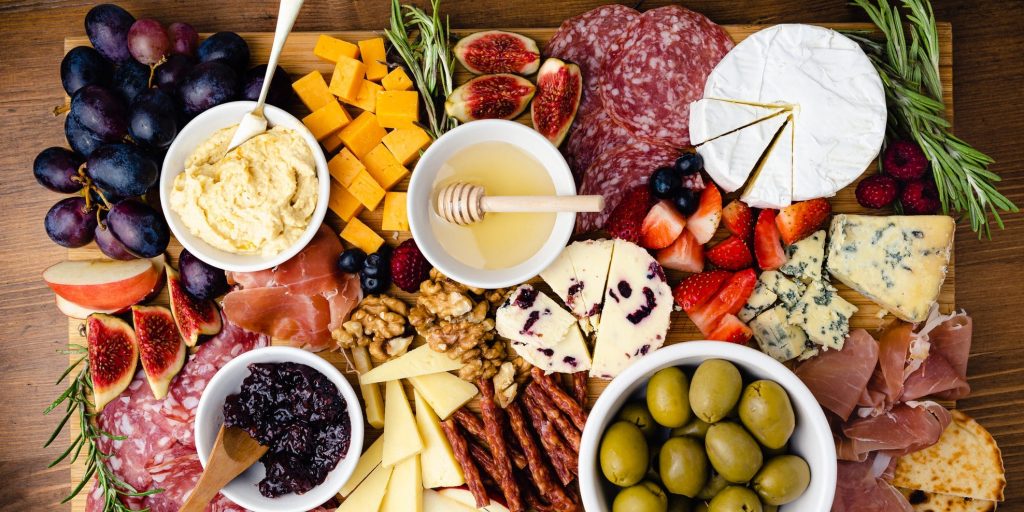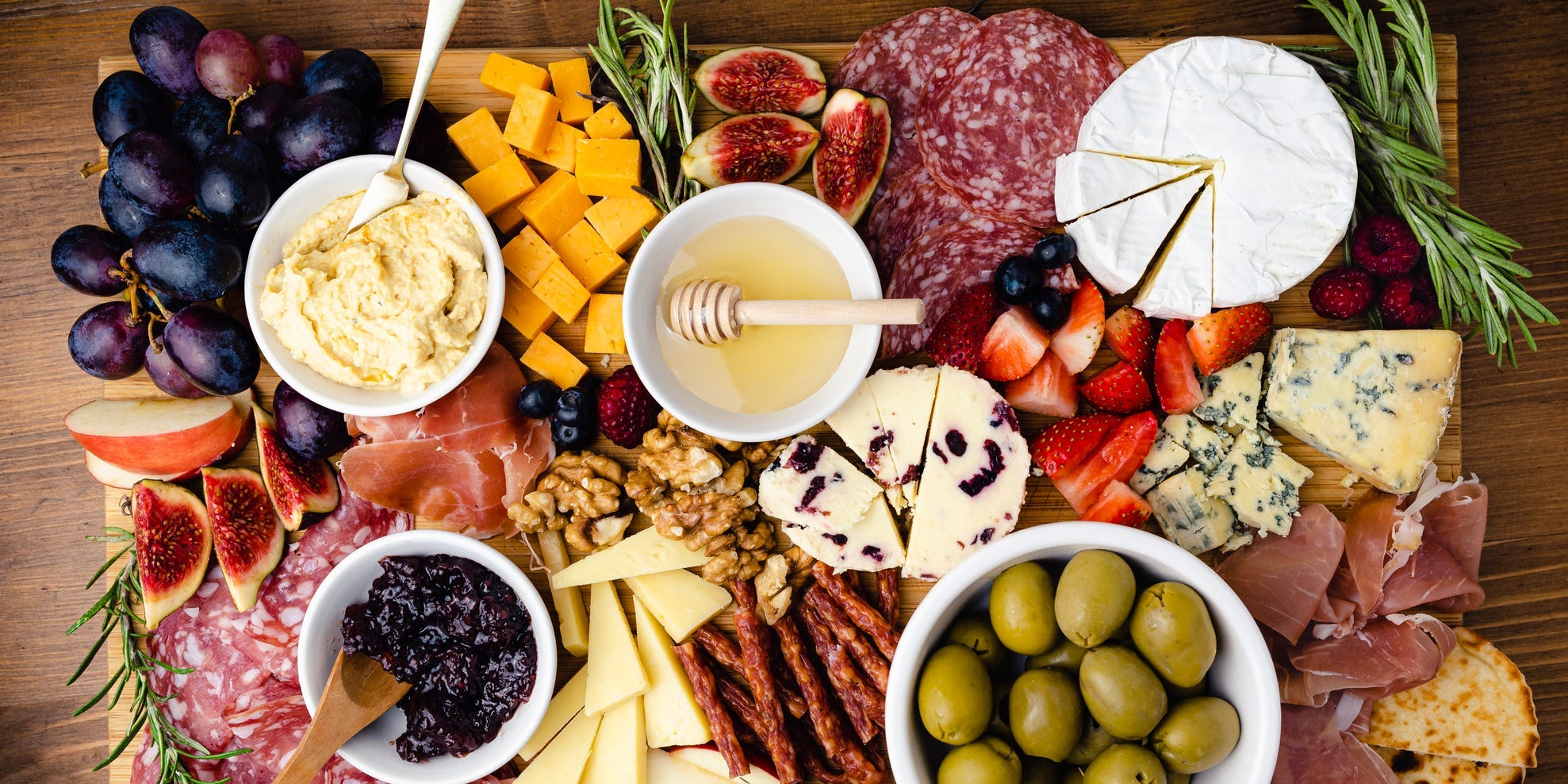
Anna Janecka/Getty Images
- A charcuterie board is made up of meats, cheeses, nuts, crackers, fruits, and vegetables.
- Charcuterie can be served as a simple snack, an appetizer, or as a happy hour accompaniment.
- Creating a charcuterie board doesn't require a specific formula, and you can mix what you like.
- Visit Insider's Home & Kitchen Reference library for more stories.
Hosting a small get-together, or settling in for the night at home? A charcuterie board is the ideal solution for a simple snack, a light dinner, or an appetizer.
According to Marissa Mullen, founder of That Cheese Plate and Cheese By Numbers, the French term "charcuterie" (pronounced shahr-kyu-tuh-ree) was originally used to describe the shops where cured, aged, and cooked meats were sold, and then the meat itself.
Now, the term has evolved to describe a spread put together on a board made up of cured or aged meat, a variety of cheeses, crackers, nuts, fruits, vegetables, and more. Just remember – meat is an essential component, or it's not technically a charcuterie board. It's just a board of beautiful food.
"Charcuterie boards make a great meal because of the endless combinations and pairing options," says Mullen. "Almost like a form of art, charcuterie boards open the space for creativity with food styling. With a wide array of colors, textures, and variety, a charcuterie board can be built by anyone, for anyone."
How to make a charcuterie board
A charcuterie board includes meats, cheeses, crackers, fruits, and vegetables. Incorporating a variety of options in the spread will help to create an interesting experience while offering multiple pairings. Start with your board as your canvas and build your spread from there. There is no specific formula to building a beautiful board. Just remember to keep balance in mind as you include a variety of items. Consider selecting from the following to get started:
- Meats: Salami, sopressata, mortadella, prosciutto, capocollo
- Crackers and bread: Croccantini, grissini, rosemary crisps, pita chips, bagel crisps
- Cheese: White cheddar, manchego, parmesan, smoked Gouda, brie, burrata
- Fruits: Grapes, strawberries, raspberries, figs, apples, pears
The most important key to remember is that charcuterie boards are meant to be delicious and fun. Put your best foot forward to create a display, and don't stress along the way.
Don't skip soft cheeses
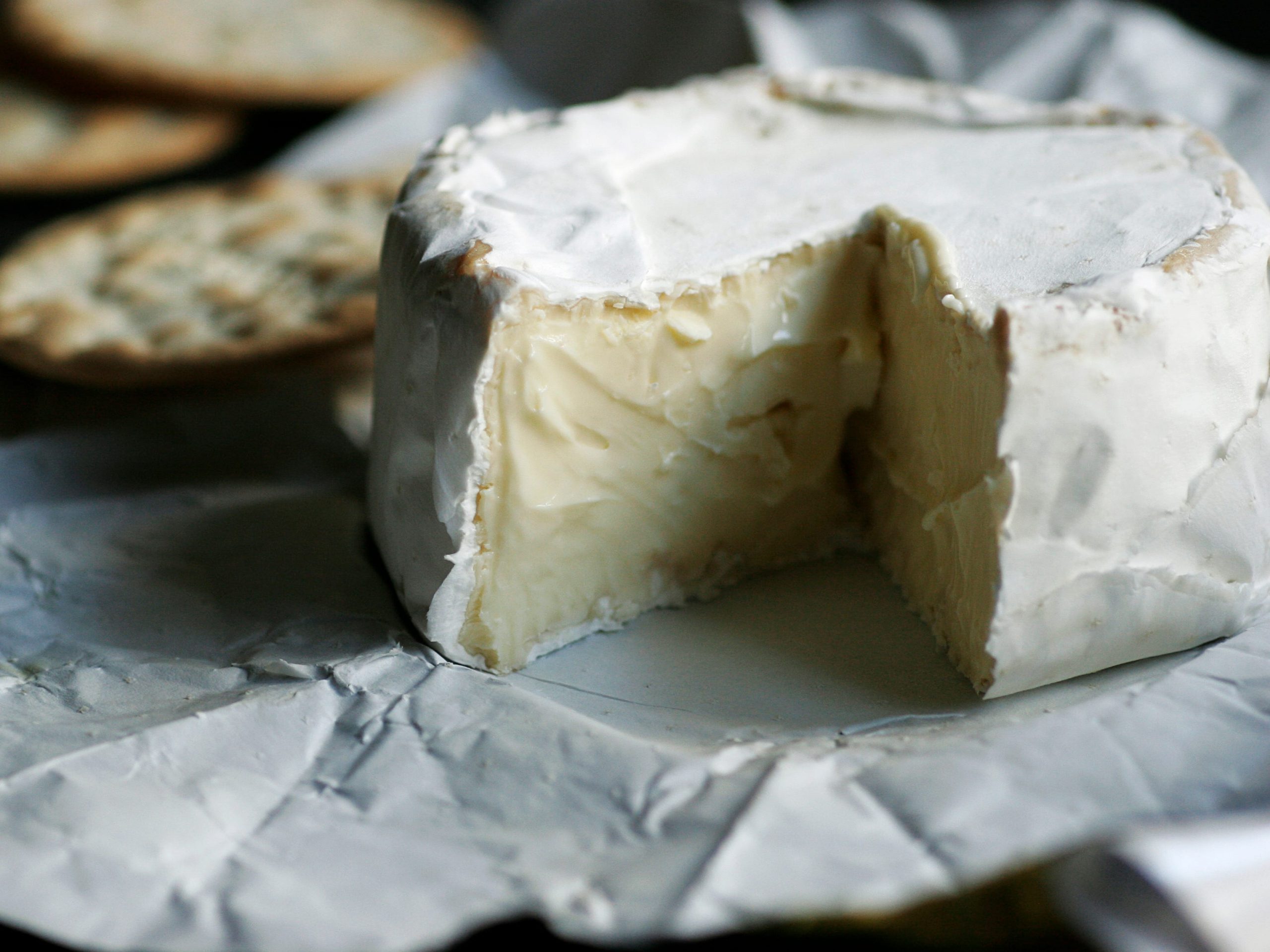
Jessica Shaver Photography/Getty Images
It may seem easier to only include hard cheeses, but don't discount soft cheeses. Brie or goat cheese can make a great addition to any board. "I prefer to keep it whole and let my guests cut their own slices," says Mullen. "If you're working with a burrata or a marinated feta, I like to serve those in small bowls on the plate to keep them contained."
Mix fresh and dried fruit
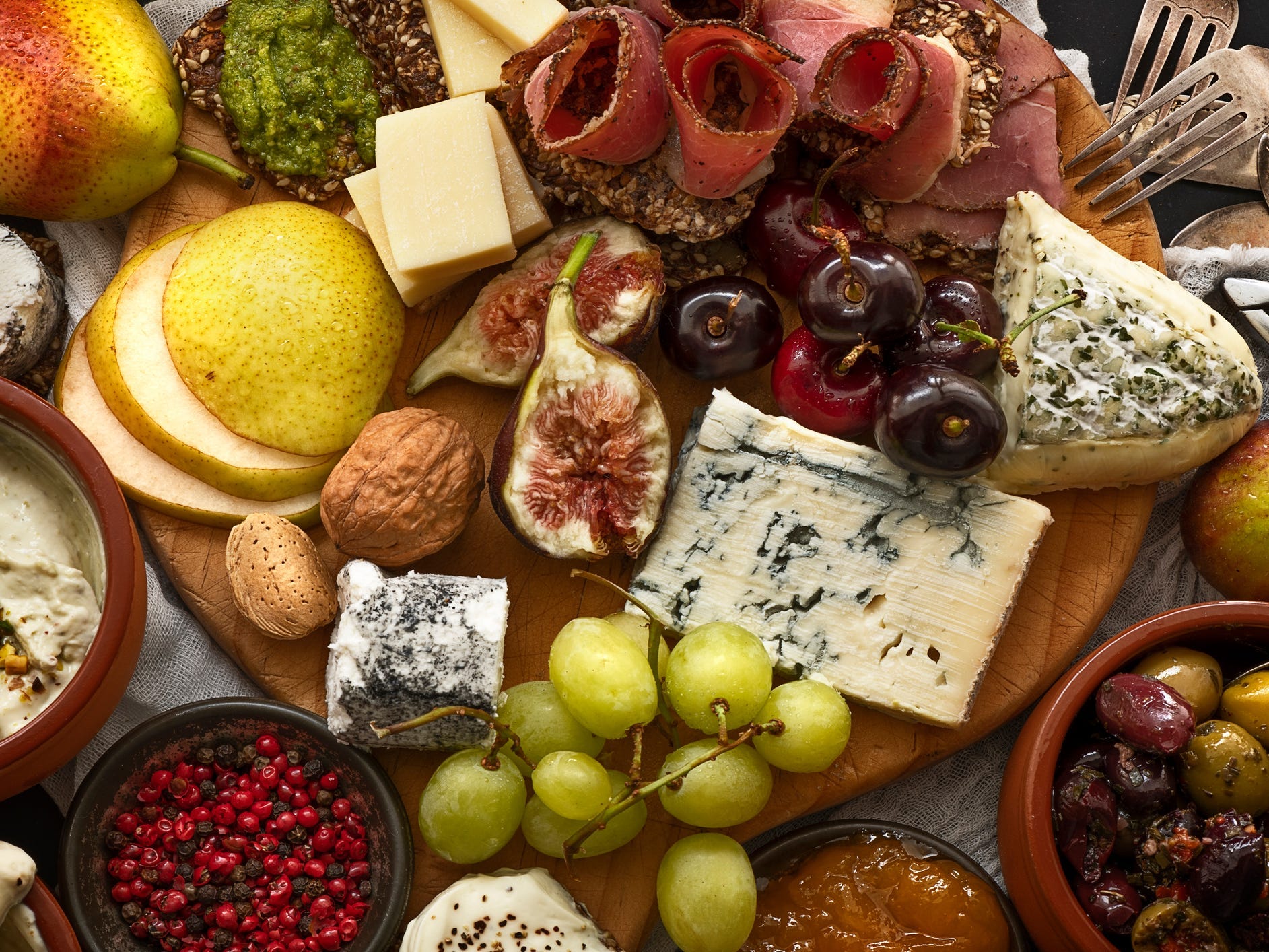
Monica Bertolazzi/Getty Images
Fresh berries such as strawberries, raspberries, and blackberries are great on a board. Fresh figs, grapes, and slices of apples and pears are terrific additions as well. Mullen also suggests incorporating dried fruits, which pair very well with nutty and grassy cheeses such as aged cheddar, Gruyère, and Gouda. Consider dried apricots, cranberries, and tart cherries.
Add a variety of spreads
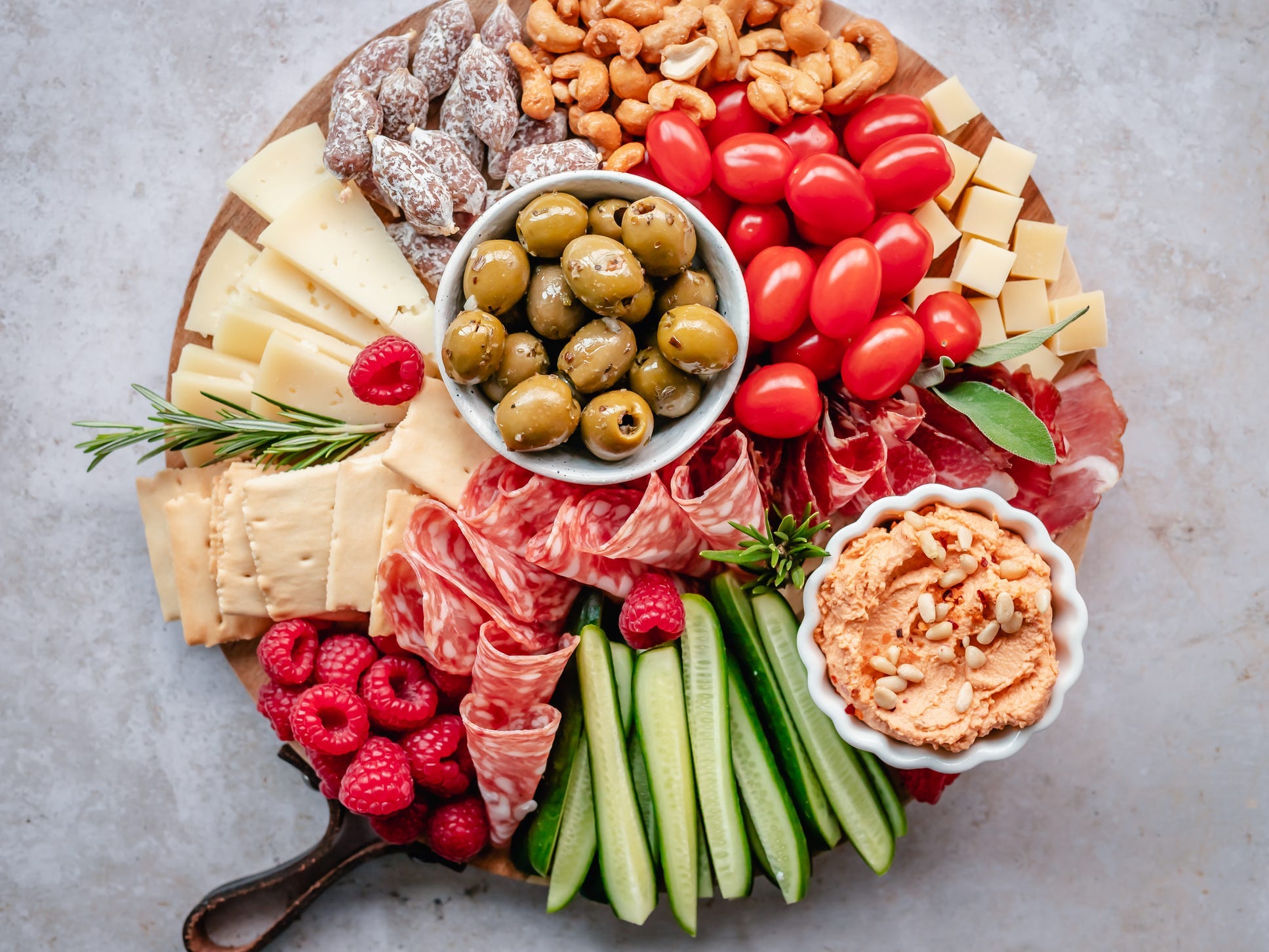
OatmealStories/Getty Images
Include spreads and dips such as hummus, artichoke dip, olive tapenade, pesto, berry jams, or spicy honey for added flavor and as great pairings with the rest of what's on your board.
Use small bowls
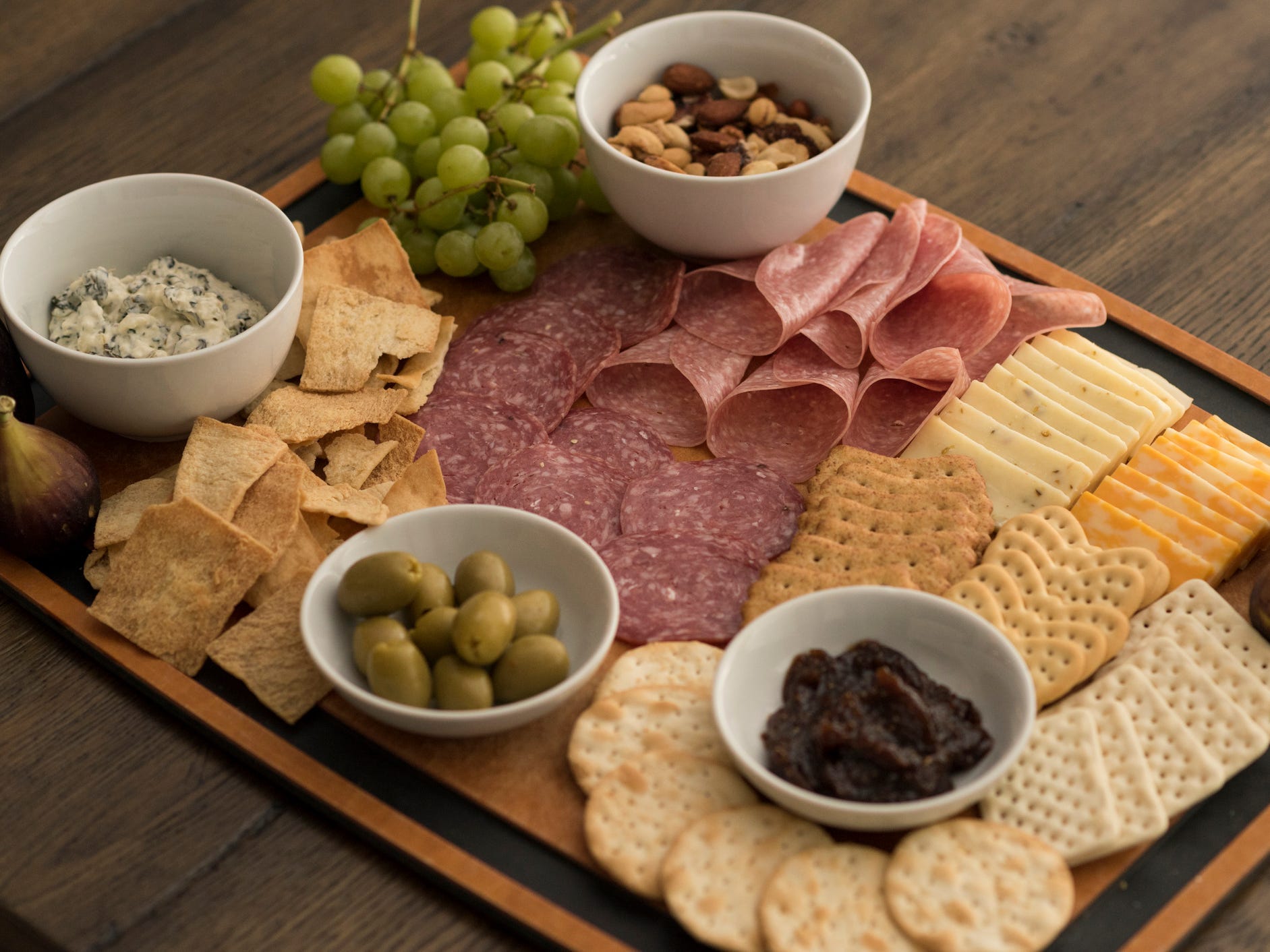
Felipe Buccianti/Getty Images
Just because your board serves as the main vessel for charcuterie, it doesn't mean everything has to go straight on it. Small bowls will open up the possibilities for what can be included. Put dips and spreads into bowls for easy serving, or to keep soft cheeses contained.
Mix crackers with breads
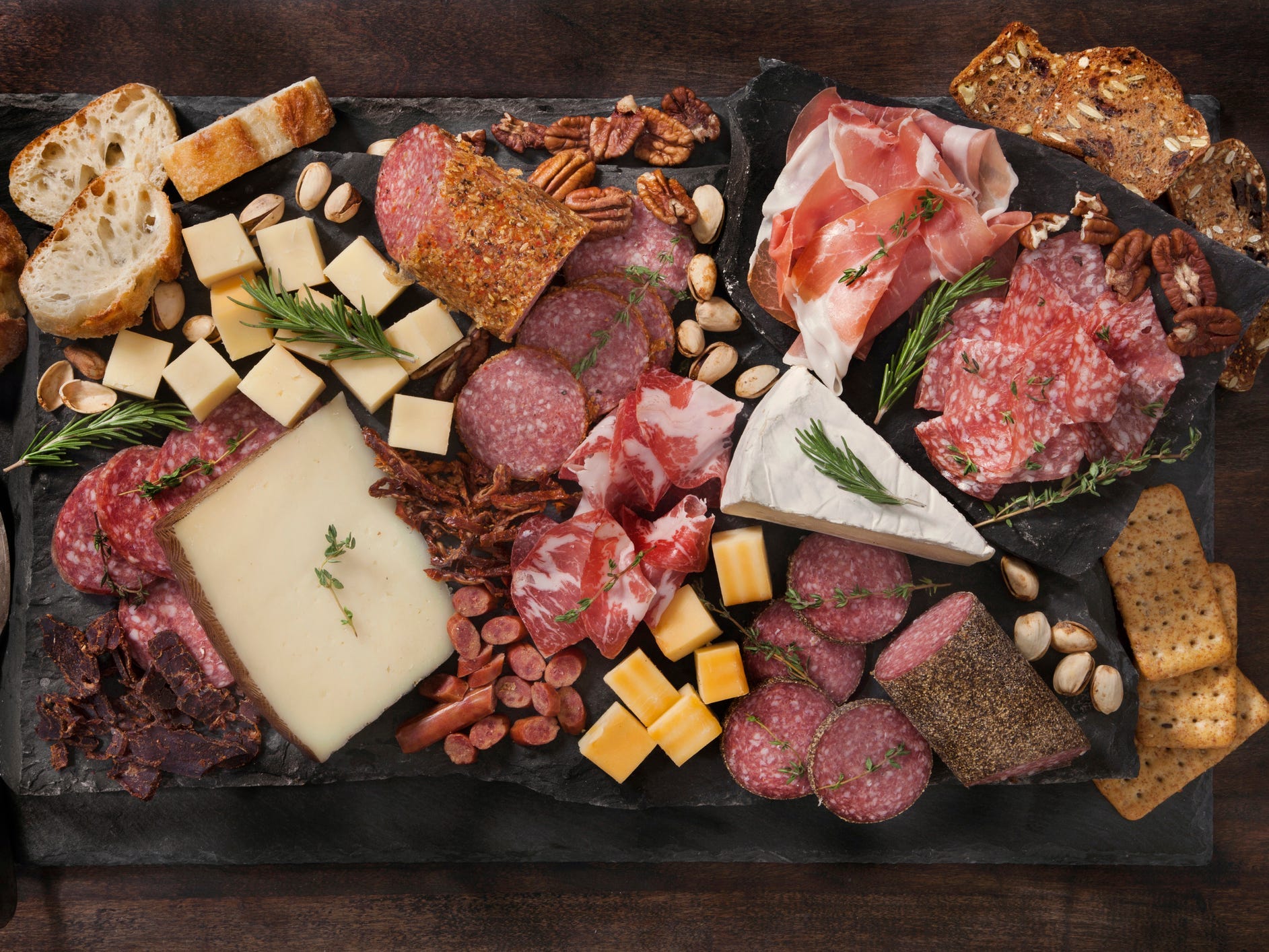
LauriPatterson/Getty Images
Include a variety of bases for those enjoying the board to build the perfect bite. Crackers such as croccantini or a flatbread cracker are a great base for crunch. Balance crackers with slices of baguette or a soft flatbread such as pita cut up into triangles.
Incorporate crunch
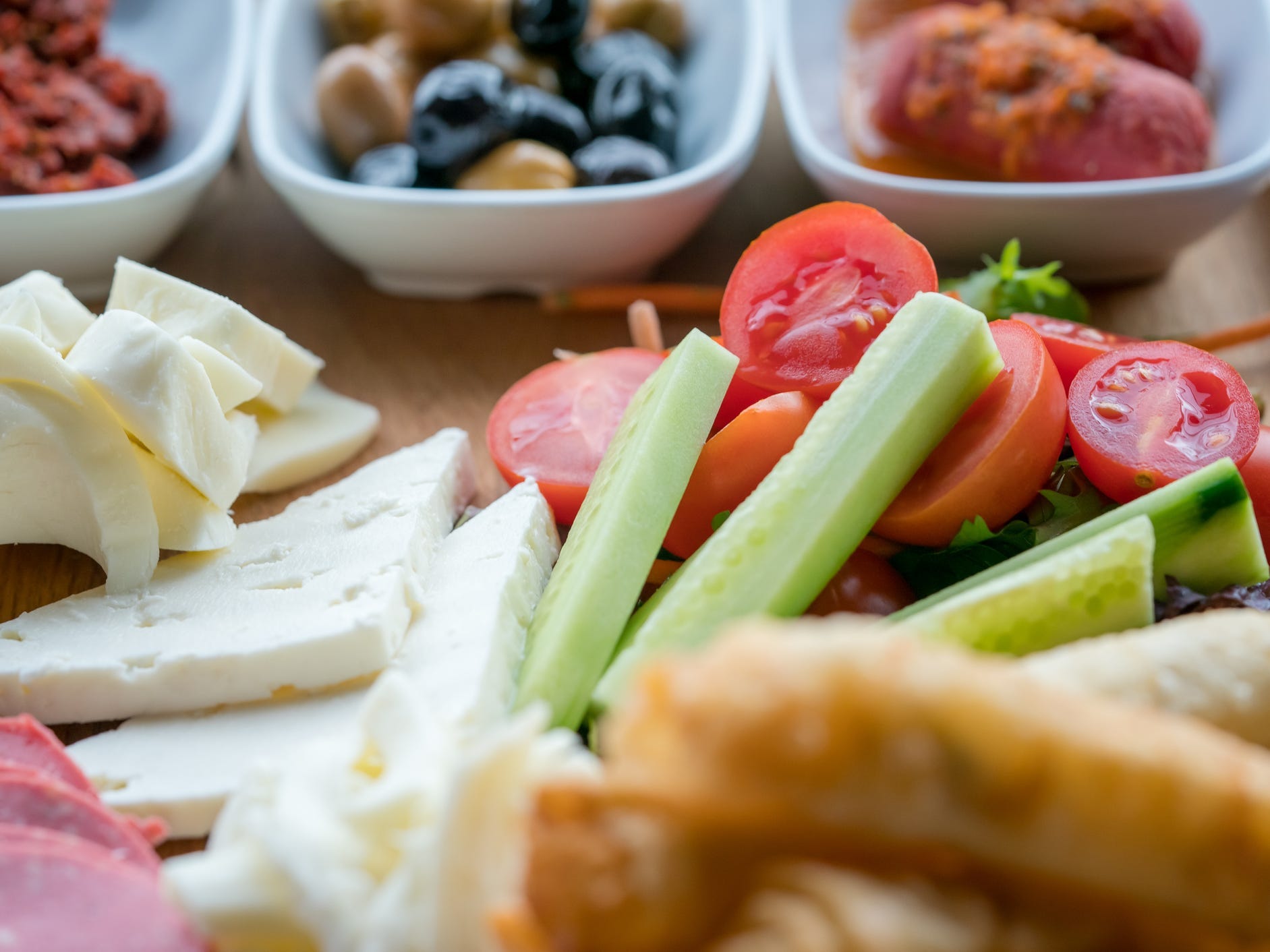
ZeynepKaya/Getty Images
Adding vegetables is one of the best ways to add some extra crunch to your board. Use vegetables like sweet peppers or cucumber slices, which Mullen notes serve as a great palate cleanser. Other crunchy options include marcona almonds and grissini breadsticks.
Fold your meats
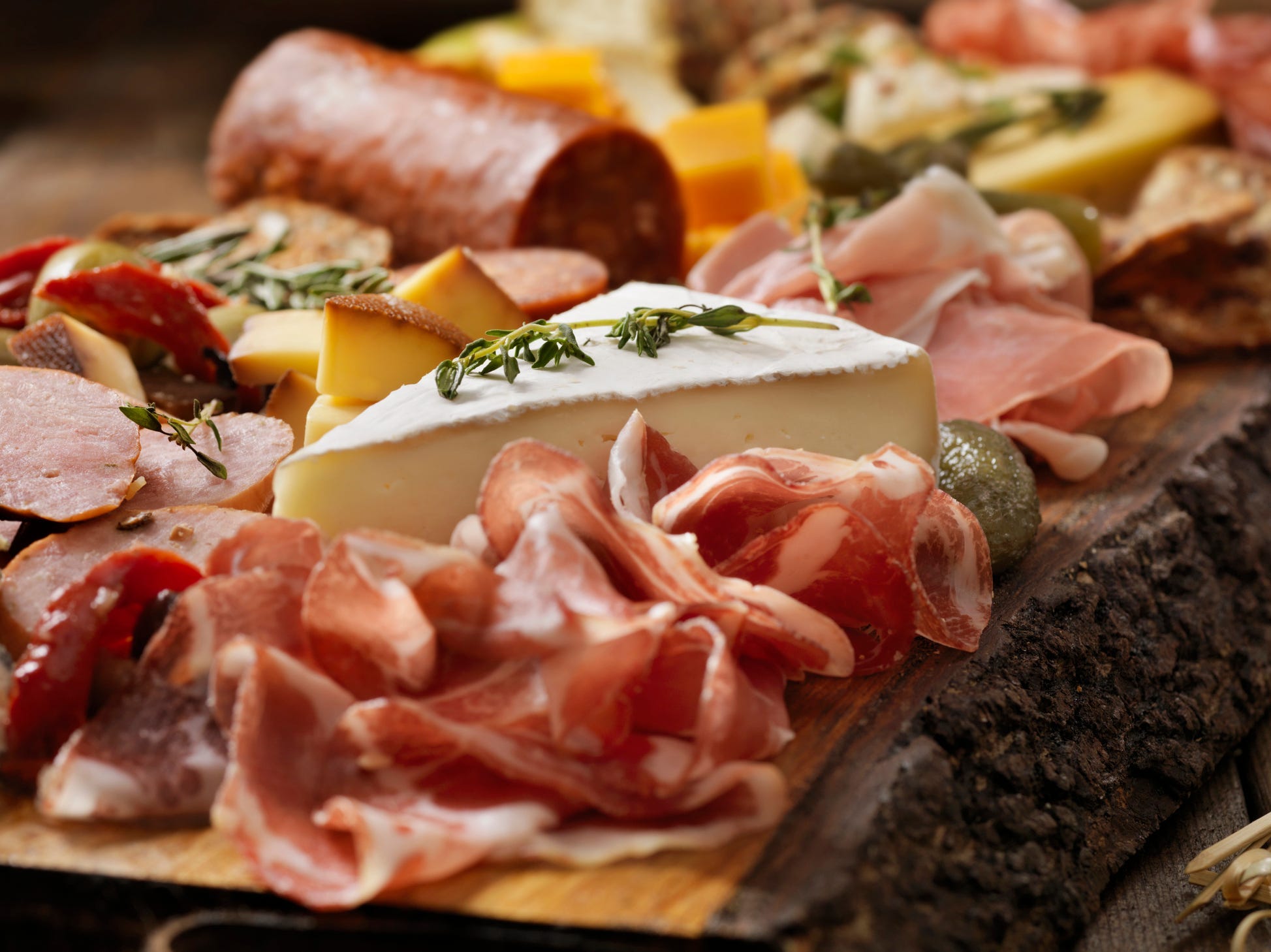
LauriPatterson/Getty Images
Laying slices of meat on your board makes it difficult for grazers to grab. Mullen suggests following what she coined as the salami river method to create a focal point. "Fold your meat into quarters and layer them from one end of the board to the other," she says. Follow this method with salami and prosciutto to keep things tidy.
Use various shapes
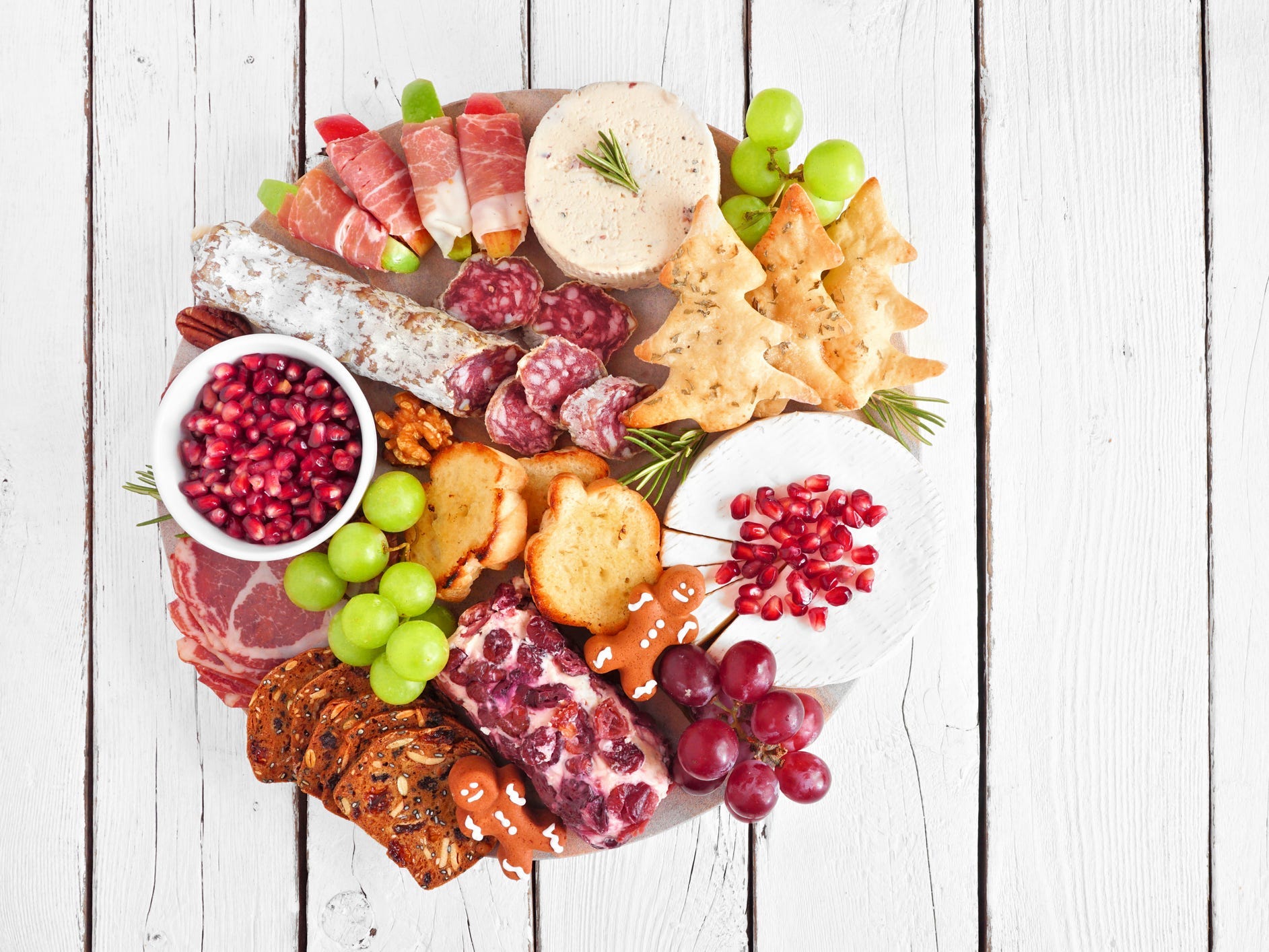
jenifoto/Getty Images
Charcuterie is typically served on a rectangular board, but there's no need to limit yourself. Utilize different sizes and shapes to suit your needs. A square or circular board can make for a great display. Play with materials such as wood, slate, and marble to suit any occasion.
Make it vegan
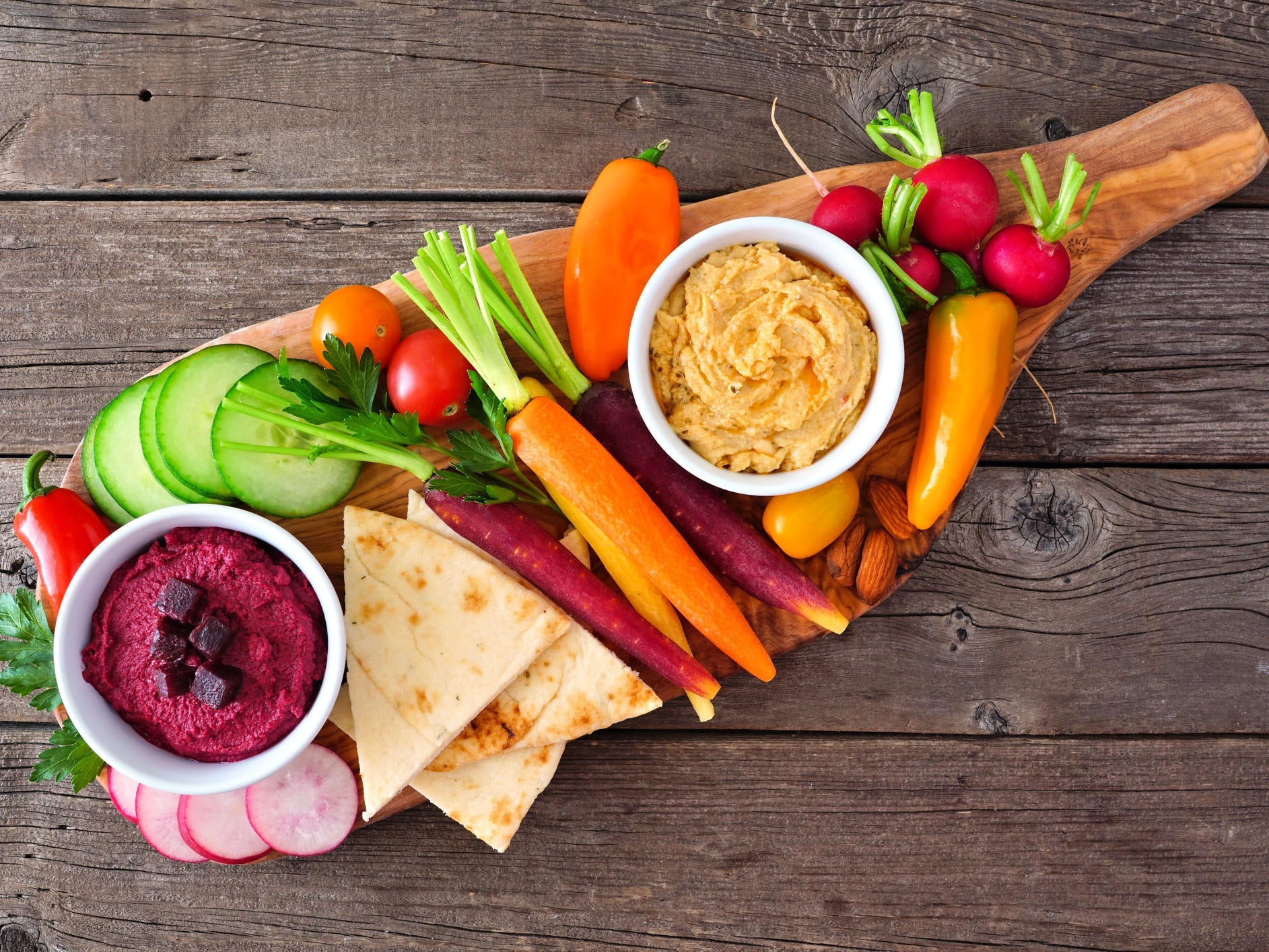
jenifoto/Getty Images
Purists might balk at the idea of a charcuterie board without meat and cheese - and they'd technically be right by definition, but rules are meant to be broken. Ditch the meats and cheeses, or grab vegan meat and nut-based cheeses to make a vegan-friendly charcuterie board. Incorporate dips like hummus or baba ganoush along with roasted chickpeas and a selection of fruits and veggies.
Don't forget utensils
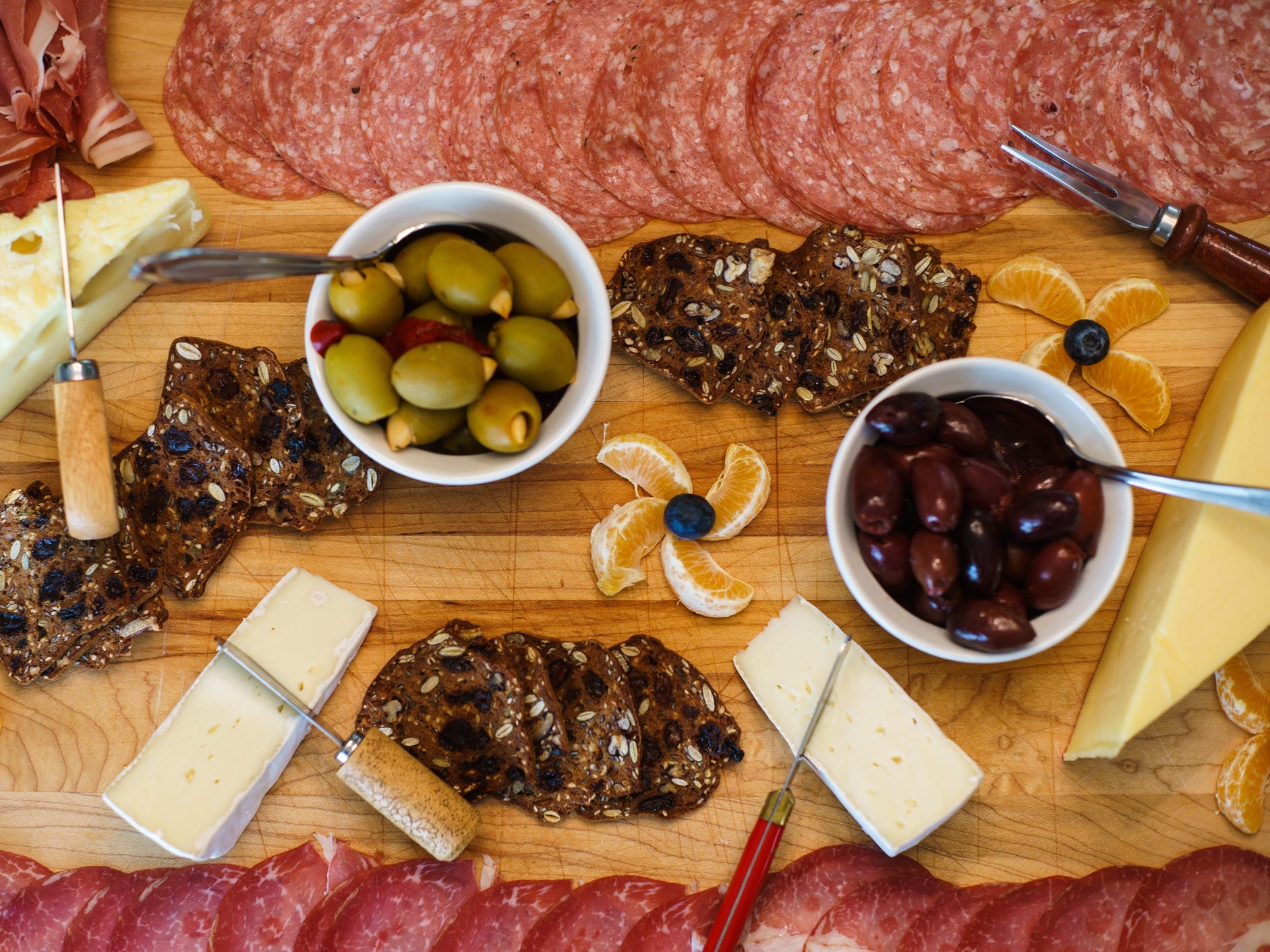
Photo by Trevor Tinker (@iamtrevorseye)/Getty Images
Especially if you're sharing your board with other people, utensils are crucial. A small cheese knife for your soft cheeses is helpful, along with picks for meats and small spoons for jams and spreads.
Add chocolate
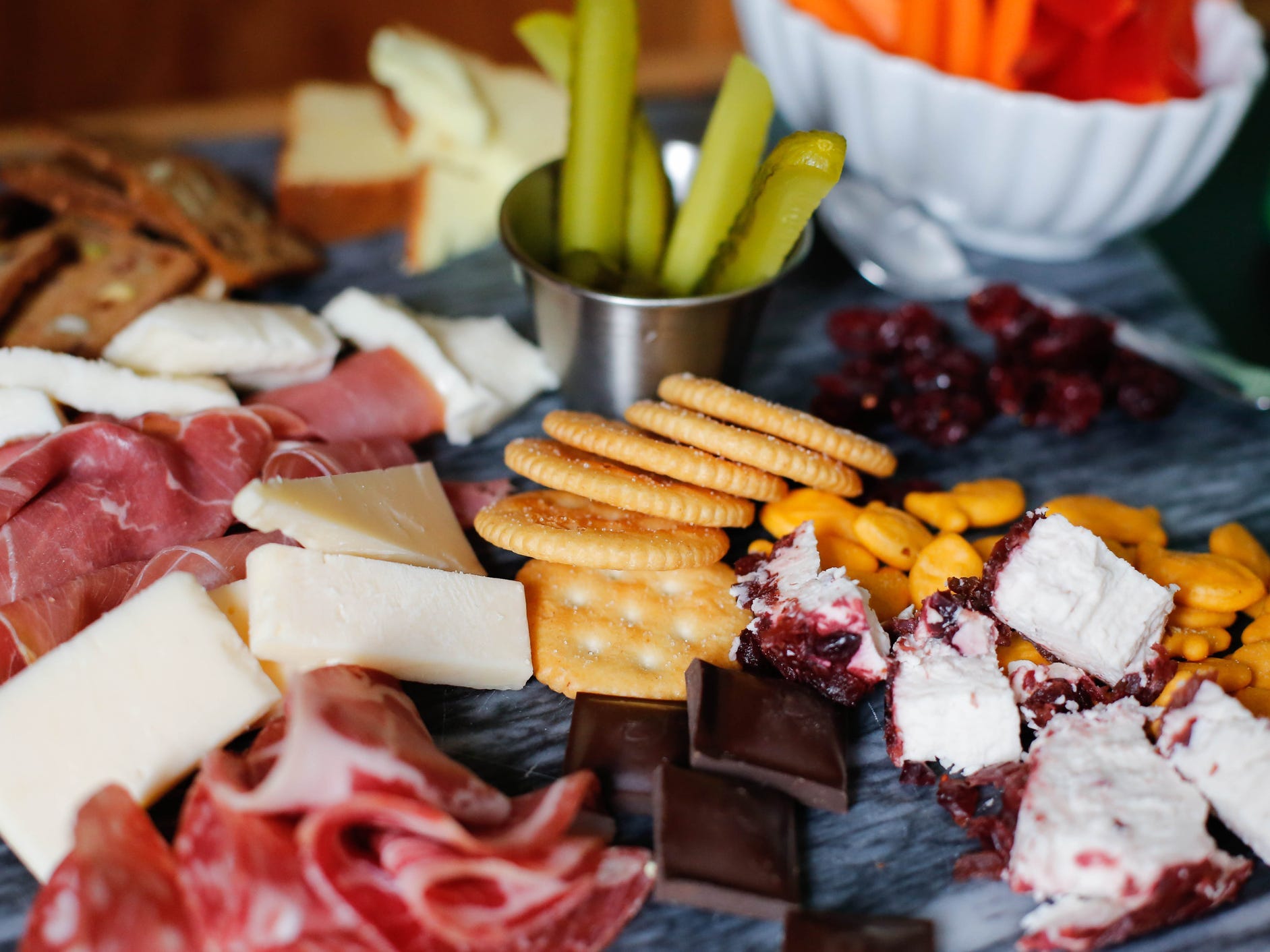
Cavan Images/Getty Images
While charcuterie boards mainly include savory snacks, chocolate on the board can go a long way in creating an interesting flavor profile. Consider breaking up a bar of dark chocolate into small pieces or adding chocolate-covered almonds to the mix of meats and cheeses.
Garnish with blooms and herbs
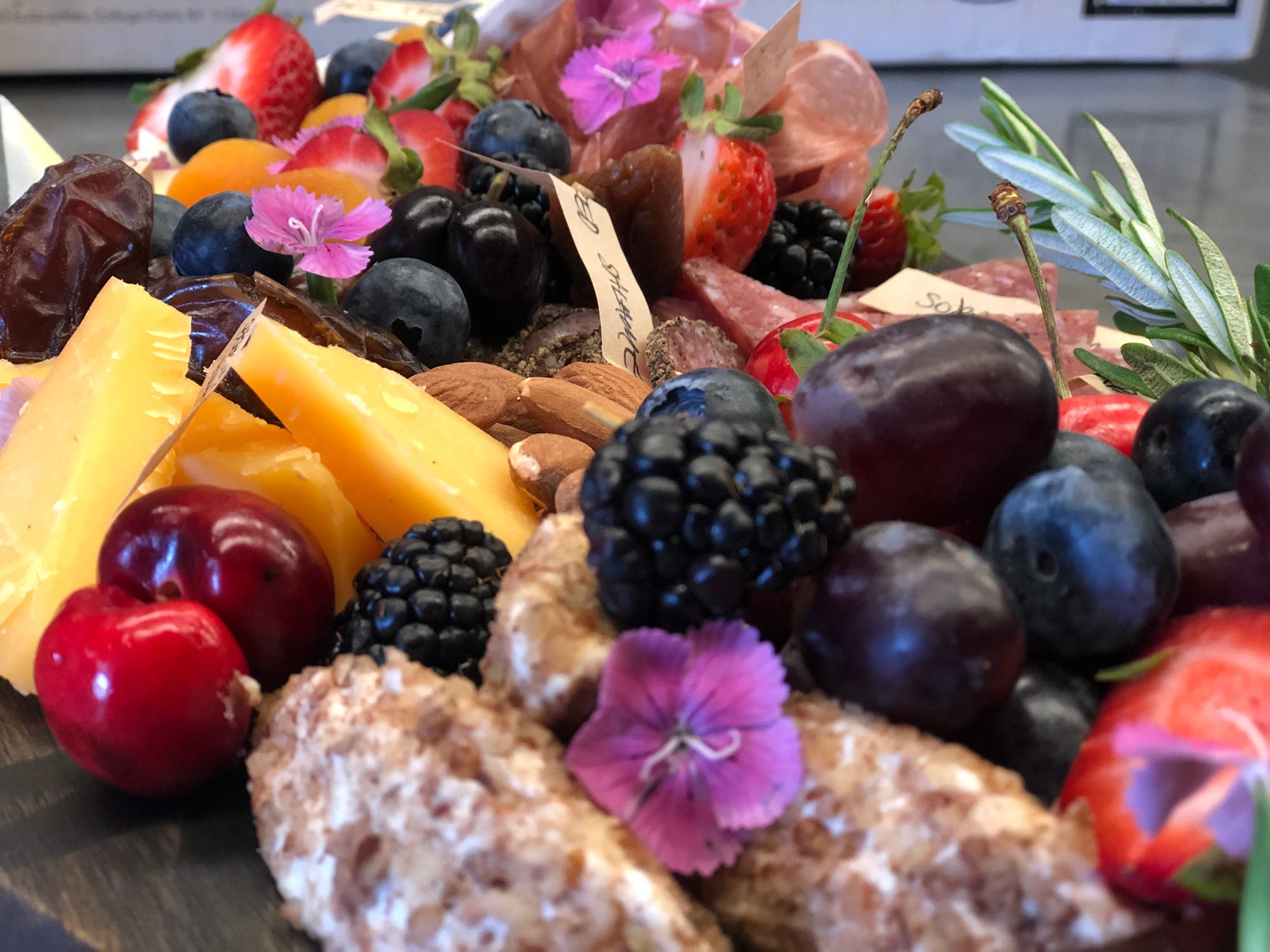
R Eduardo Sanchez/Getty Images
One of the simplest ways to take your board to a whole new level of impressive is throwing in some fresh flowers and herbs. Place edible flowers such as violas, carnations, and cornflowers throughout the board for a beautiful pop of color. Mullen suggests adding fresh herbs such as rosemary, sage, and thyme as well.
Consider timing
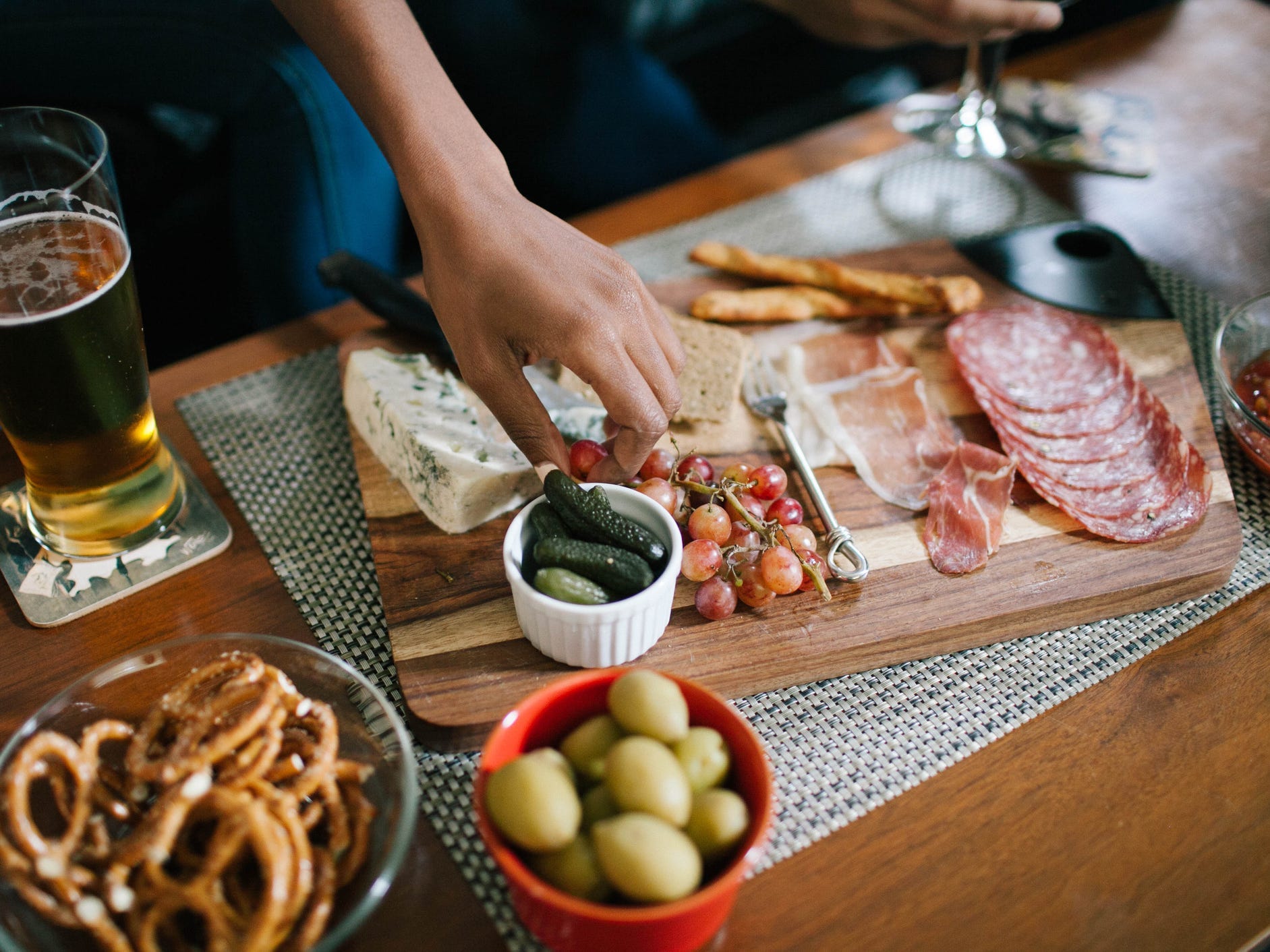
EasyPx/Getty Images
If you're creating a charcuterie board to share with others, consider when and for how long you'll be serving it. Many hard cheeses and cured meats can sit out, but you don't want the items on your board to start sweating or look unappetizing. Prep your board ahead of time, cover it with plastic wrap, and then pull it out of the fridge once you're ready to dig in.
Add labels
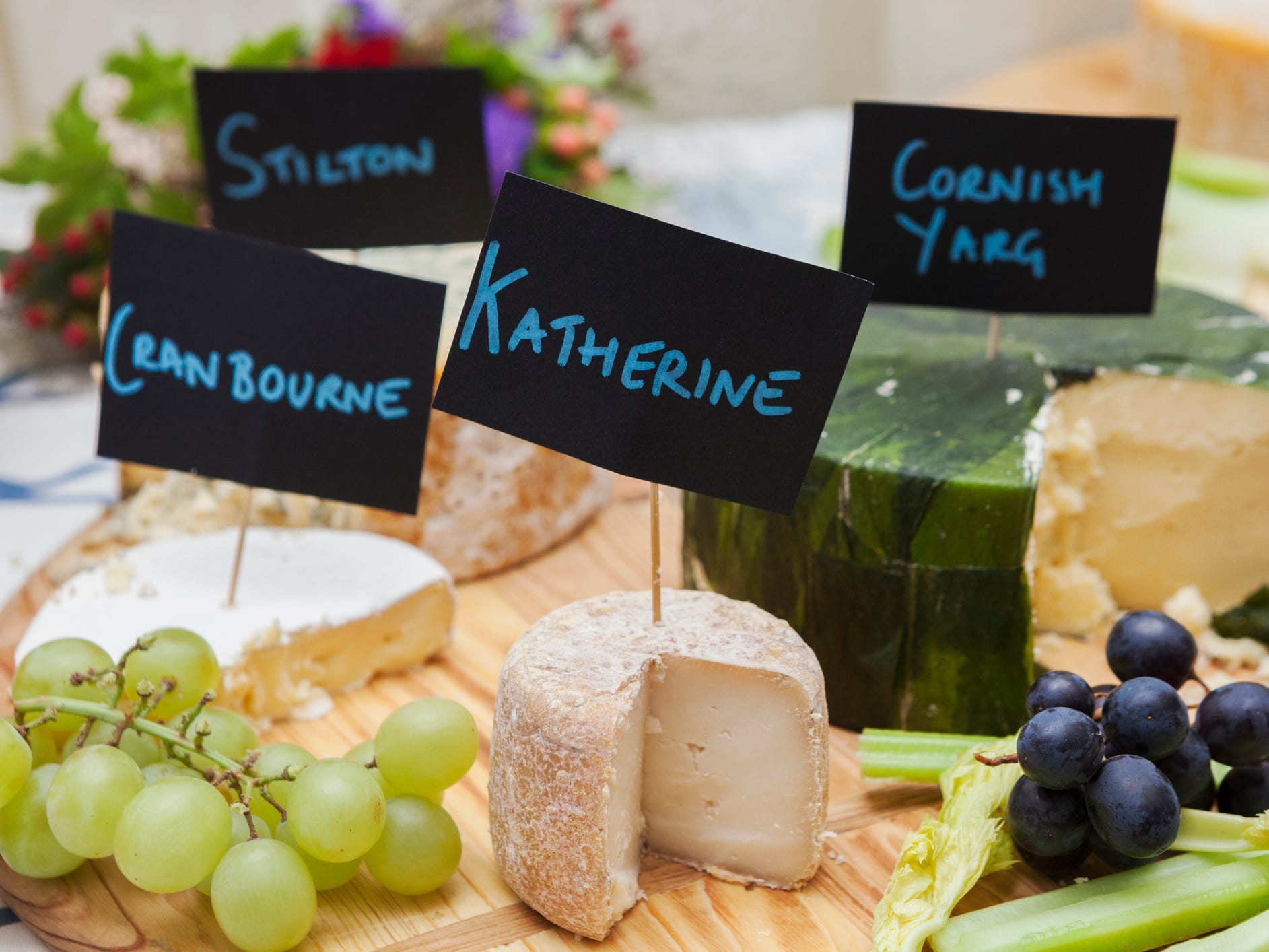
Mint Images/Getty Images
While it certainly isn't necessary to label recognizable items on your board such as carrots or strawberries, there may be a few lesser-known items you'll want to point out if you're sharing with guests. Use small toothpicks with flags or tiny chalkboard signs to label the more obscure cheeses or meats.
Keep balance in mind
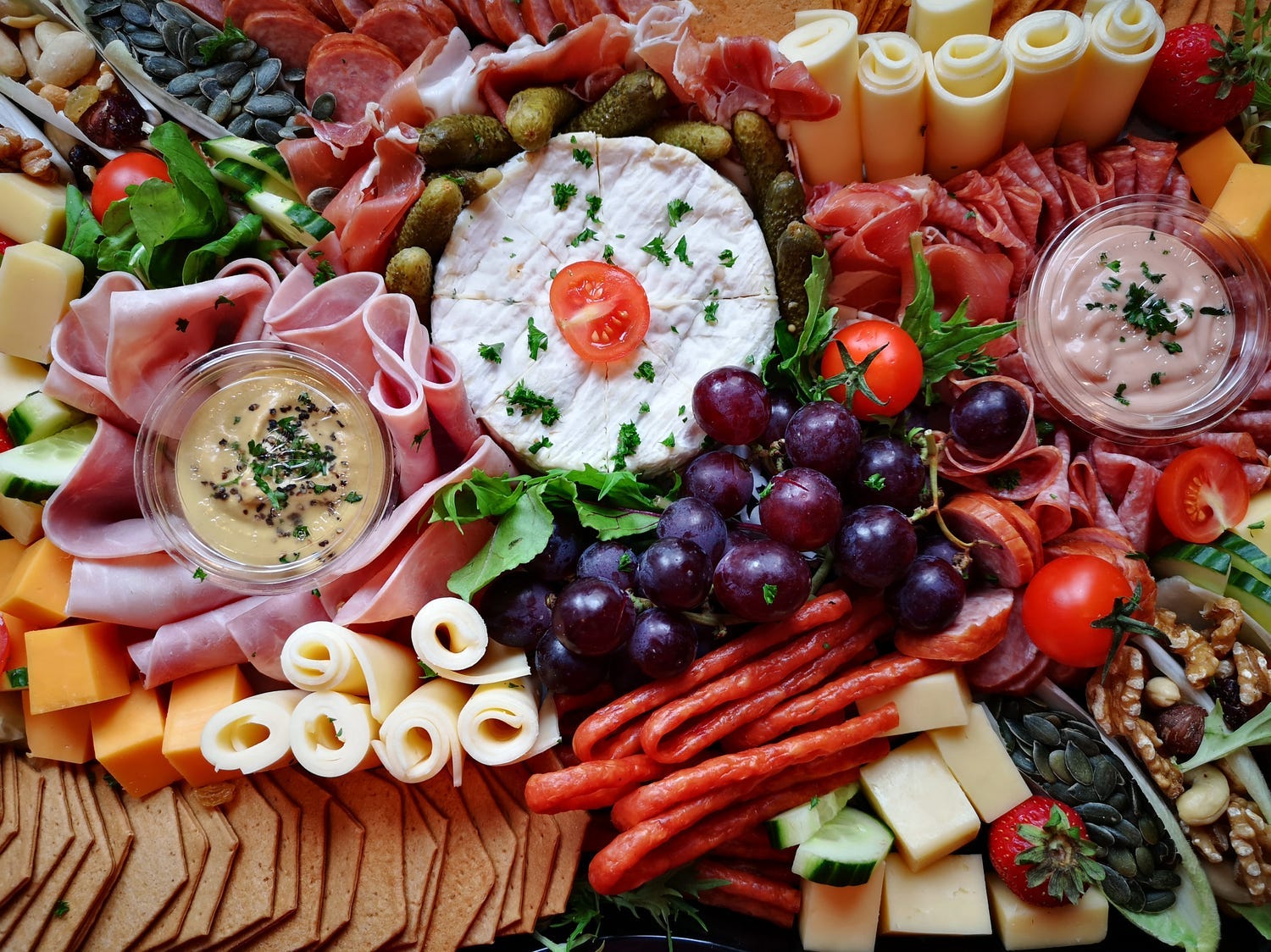
Annie Japaud/Getty Images
If you're making a spread for yourself at home, don't be afraid to go heavy on your favorite item. But if you're making a board to share with others, be sure to balance your offerings. Include an appropriate amount of meats and cheeses for the number of people you're serving and fill in with a balanced amount of crackers, fruits, vegetables, and nuts. That way, your guests won't be left with just a selection of meat when the board starts to be picked over.
What to pair with your charcuterie board
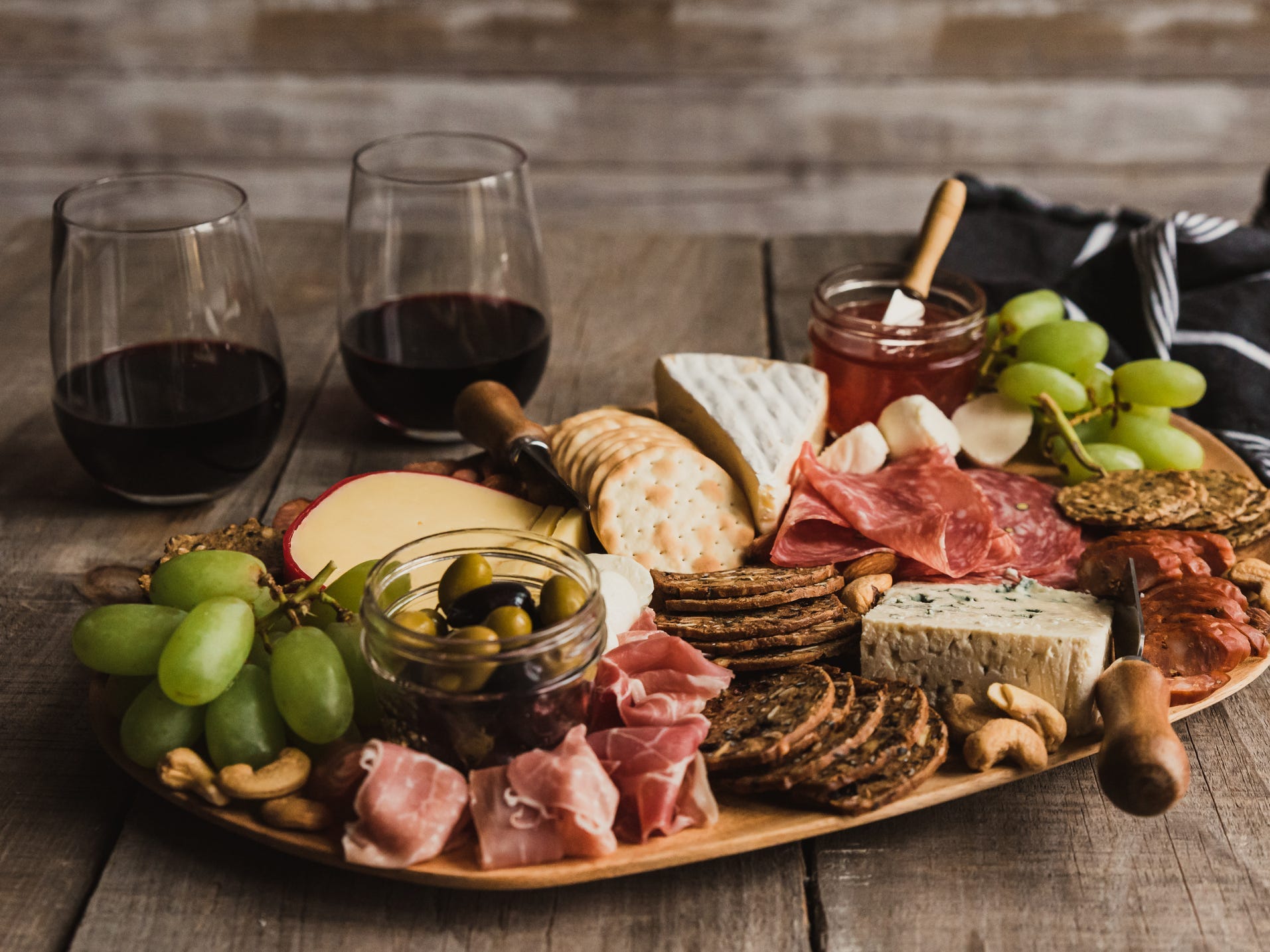
Cavan Images/Getty Images
A glass of wine pairs well with charcuterie, whether you prefer red or white. A medium-bodied red such as merlot or pinot noir will complement salty meats, while bright, acidic whites such as Riesling, chardonnay, and sauvignon blanc offer refreshing balance. A semi-dry hard cider, a gin and tonic, or a light beer such as a pilsner or Kolsch make for great pairings as well.
Insider's takeaway
It may seem intimidating to make your own charcuterie board, but it's easier than you think. Select your favorite meats and cheeses as the base of the board, and then fill it in with complementing ingredients. The goal is to have fun and to get creative to put together a board that's both delicious and beautiful.
